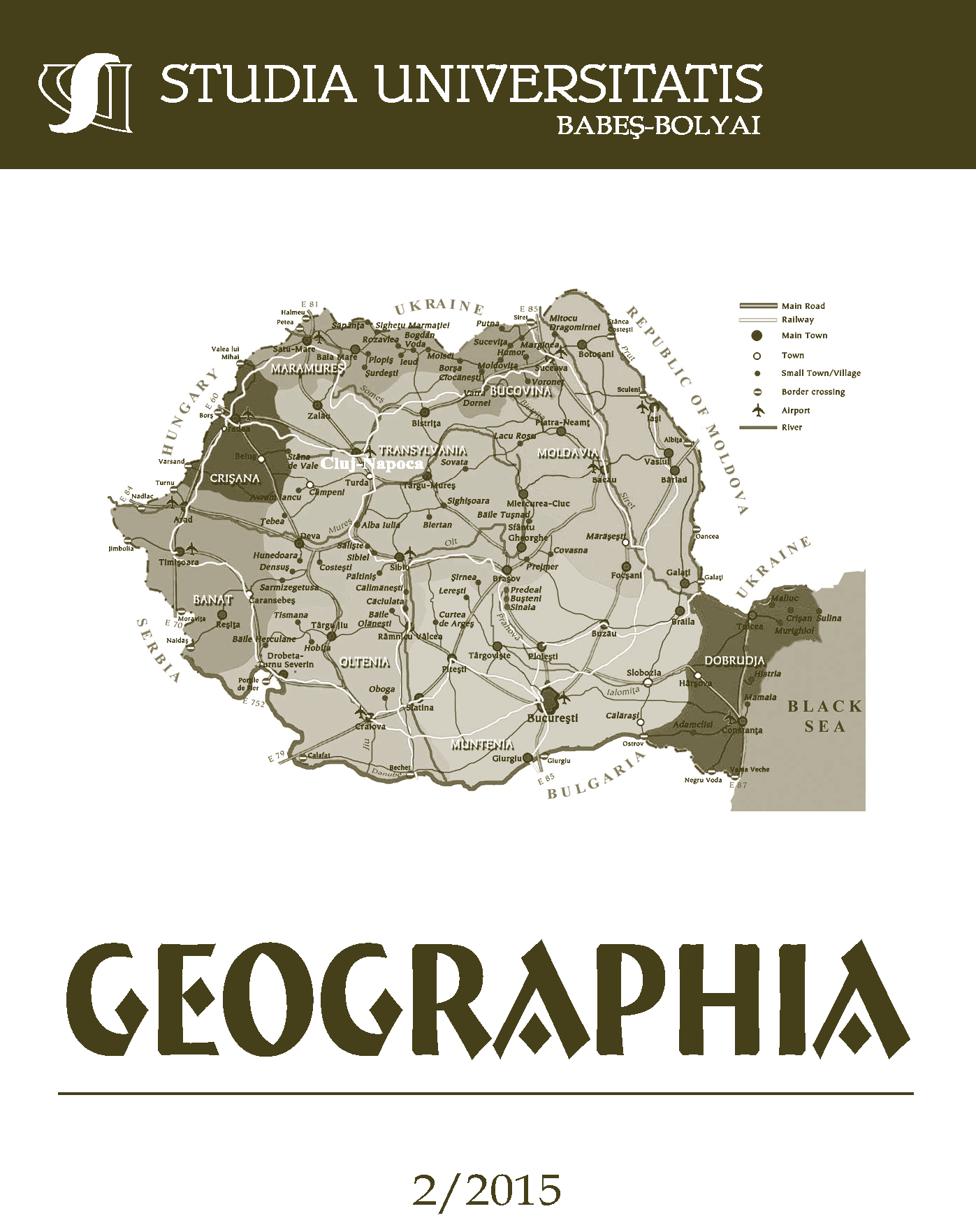RAINWATER MANAGEMENT AIMING TO IMPROVE THE QUALITY OF URBAN SURFACE RUNOFF
Keywords:
SCS-CN method, rooftop runoff, urban area, impervious area.Abstract
Rainwater Management Aiming to Improve the Quality of Urban Surface Runoff. Currently many urban areas experience the quality degradation of rooftop runoff and accumulated rainwater. The present study aims to estimate the volume of water draining from rooftops within an area of 0.68 km² in the municipality of Cluj-Napoca. The volume of water flowing from rooftops presents a beneficial alternative not only for collecting rainwater for later use, but also for reducing the volume of water and for improving surface runoff quality in urban areas. The procedure was based on the Michel Simplified SCS-CN model, a derived variant of the most popular hydrological model, the Soil Conservation Service Curve Number (SCS-CN). The results of the applied method reveal that the highest rooftop runoff water values correspond to the summer months, these being based on daily rainfall data. Estimating the volume of water draining from rooftops for future harvesting is an important step in the sustainable management of rainwater in urban areas and in improving water quality.
References
Bannerman, R. T., Owens, D. W., Dodds, R. B., Hornewer, N. J. (1993), Sources of pollutants in Wisconsin stormwater, Water Sci Technol 28 (3-5), 241–59.
Brown, J. N., Peake, B. M. (2006), Sources of heavy metals and polycyclic aromatic hydrocarbons in urban stormwater runoff, Sci. Total Environ., 359, 145–155.
Budai, P., Clement, A. (2011), Refinement of national-scale heavy metal load estimations in road runoff based on field measurements, Transportation Research, Part D: Transport and Environment 16 (3) 244–250.
Chow, M. F., Yusop, Z., Shirazi, S. M (2013), Storm runoff quality and pollutant loading from commercial, residential, and industrial catchments in the tropic, Environmental Monitoring and Assessment, 185, 8321-8331.
Crăciun, A. I., Haidu, I., Bilasco St. (2007), The SCS-CN model assisted by GIS alternativ estimation of the hydric runoff in real time, Geographia Technica, 3 (1), 1-7.
Ebrahimian, M., Ainuddin Nuruddin, A., Mohd Soom, M. A. B., Sood A. M. (2012), Application of NRCS-curve number method for runoff estimation in a mountainous watershed, Caspian J. Env. Sci., 10 (1), 103-114.
Fan, F., Deng, Y., Hu X., Weng, Q. (2013), Estimating Composite Curve Number Using an Improved SCS-CN Method with Remotely Sensed Variables in Guangzhou, China, Remote Sens., 5, 1425-1438.
Gnecco, I., Berretta, C., LanZa, L. G. (2005), Stormwater pollution in the urban environment of Genoa, Italy, Atmospheric Research, 77, 60–73.
Greene, R., Cruise, J. (1995), Urban Watershed Modeling Using Geographic Information System, J. Water Resour. Plann. Manage., 121(4), 318–325.
Hawkins, R. H., Ward, T. J., Woodward, D. E., Van Mullem, J. A. (2010), Continuing evolution of rainfall-runoff and the Curve Number precedent, Paper to be presented at the Joint Federal Interagency 4 Hydrologic Modeling Conference, Las Vegas, NV, June 27-July 1.
Mishra, S. K., Singh, V. P. (1999), Another look at the SCS-CN method, ASCE J. Hydrol. Eng., 4 (3), 257–264.
Mishra, S. K., Jain, M. K., Singh, V. P. (2004), Evaluation of the SCS-CN-based model incorporating antecedent moisture, Water Resources Management, 18 (6), 567-589.
Sahu, R. K, Mishra, S. K., Eldho, T. I., Jain, M. K., (2007), An advanced soil moisture accounting procedure for SCS curve number method, Hydrol. Process. 21, 2872–2881.
Shadeed, S., Almasri, M. (2010), Application of GIS-based SCS-CN method in West Bank catchments, Palestine, Water Science and Engineering, 3, 1–13.
Singh, P. K., Yaduvanshi, B. K., Patel S., Ray, S. (2013), SCS-CN Based Quantification of Potential of Rooftop Catchments and Computation of ASRC for Rainwater Harvesting, Water Resour Manage, 27, 2001-2012.
Soulis, K. X., Valiantzas, J. D. (2012), SCS–CN parameter determination using rainfall-runoff data in heterogeneous watersheds – the two-CN system approach, Hydrology and Earth System Sciences, 16, 1001–1015.
USDA - NRCS (2004), Estimation of Direct Runoff from Storm Rainfall, In: National Engineering Handbook, Part 630, Hydrology, Chapter 10, Washington D.C., USA.
Zhan, X., Huang, M-L. (2004), ArcCN-Runoff: an ArcGIS tool for generating curve number and runoff maps, Environmental Modeling & Software, 19 (10), 875-879.
*** (2005) Hotărârea Guvernului nr. 352/2005 privind modificarea si completarea Hotărârii Guvernului nr. 188/2002 pentru aprobarea unor norme privind conditiile de descărcare în mediul acvatic a apelor uzate, publicată în Monitorul Oficial al României, nr. 398 din 11/05/2005.
Downloads
Published
How to Cite
Issue
Section
License
Copyright (c) 2015 Studia Universitatis Babeș-Bolyai Geographia

This work is licensed under a Creative Commons Attribution-NonCommercial-NoDerivatives 4.0 International License.





 ©Studia Universitatis Babeş-Bolyai Geographia. Published by Babeș-Bolyai University.
©Studia Universitatis Babeş-Bolyai Geographia. Published by Babeș-Bolyai University.